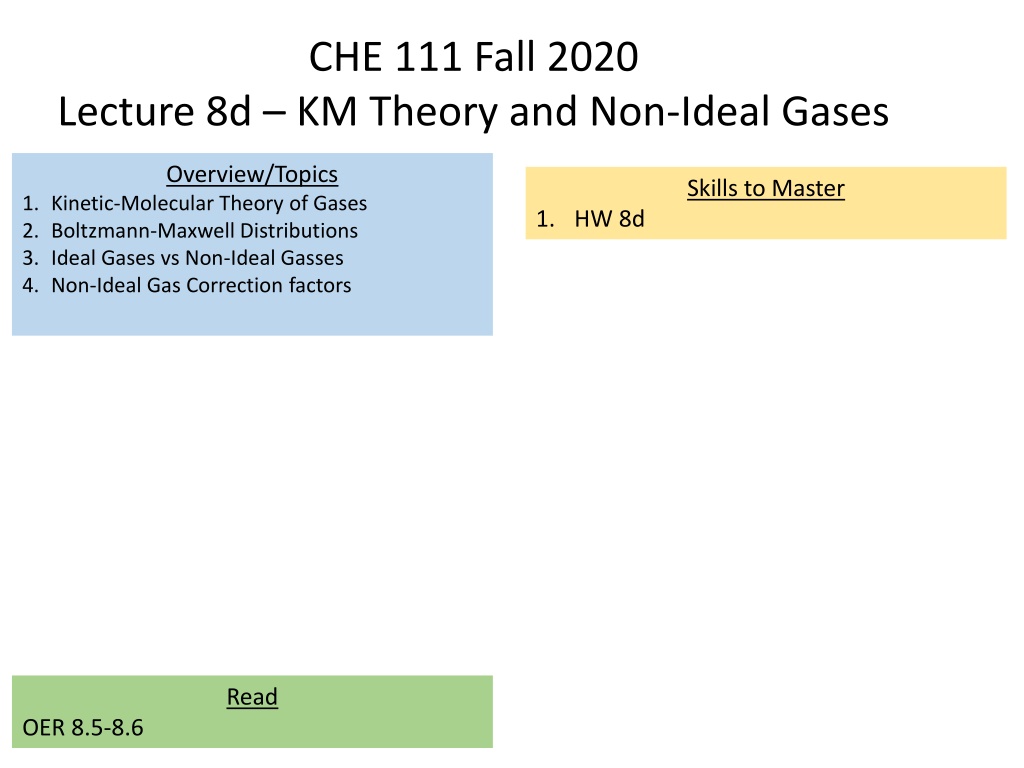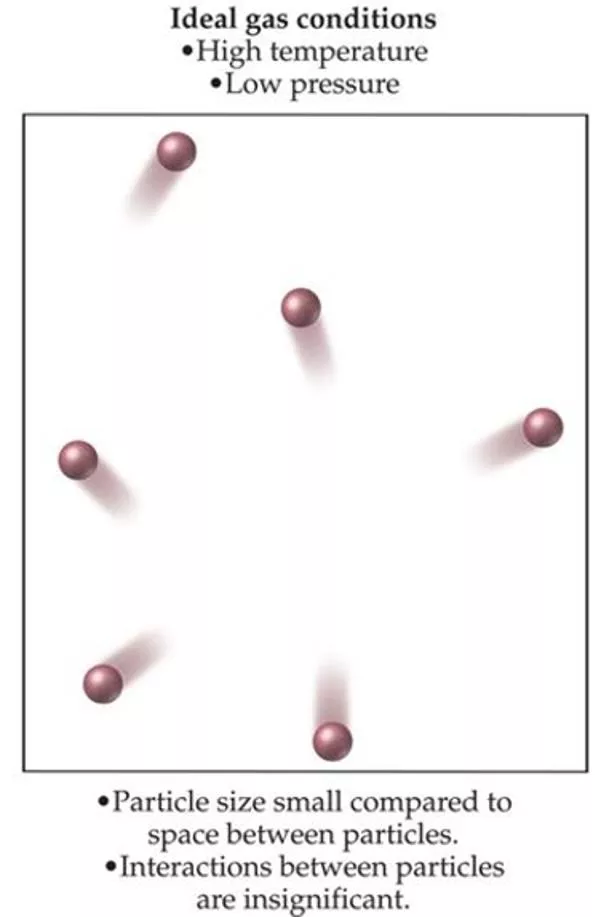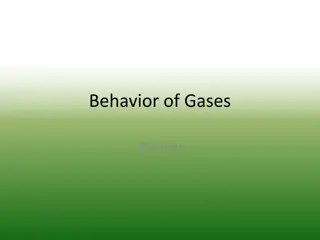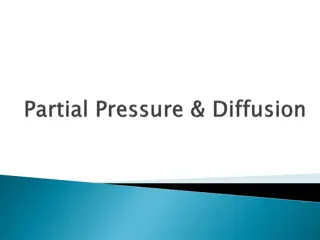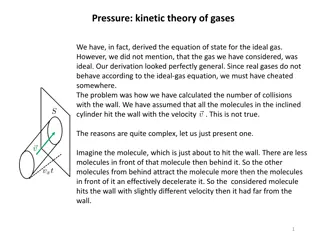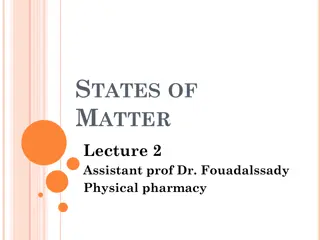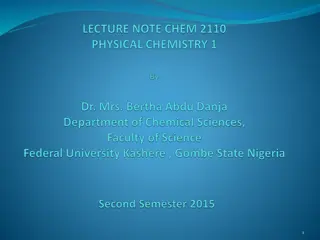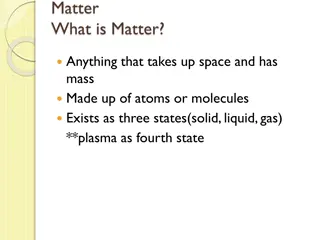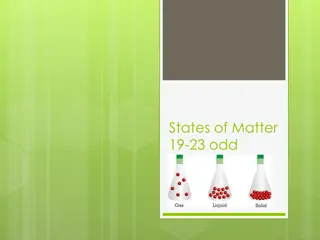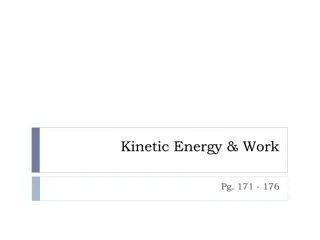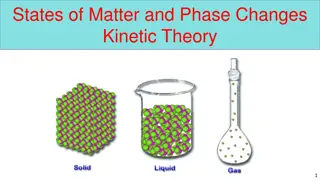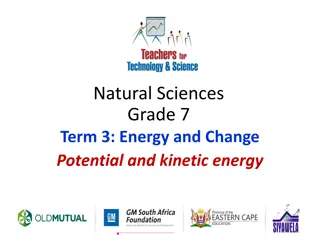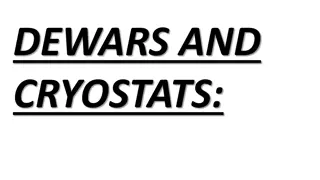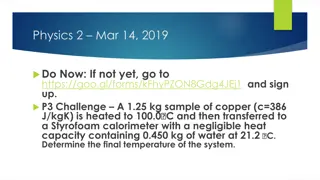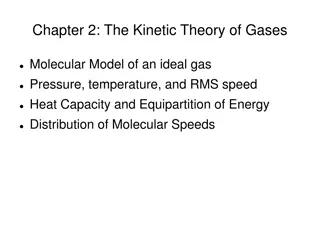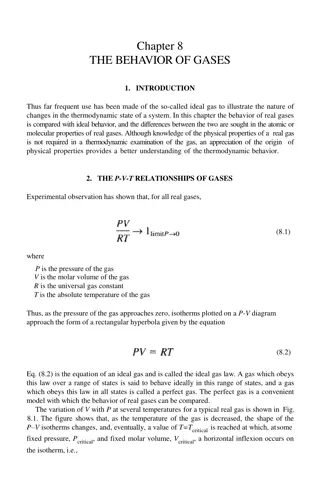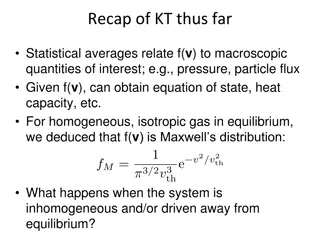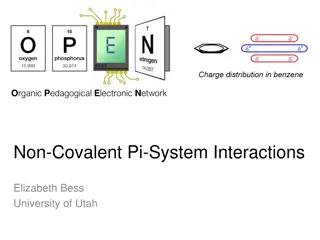Kinetic-Molecular Theory: Non-Ideal Gases Overview
Kinetic-Molecular Theory of Gases, Boltzmann-Maxwell Distributions, and the comparison between Ideal and Non-Ideal Gases. Understand correction factors and laws like Boyle's Law, Charles's Law, and Avogadro's Law. See how the concepts of pressure, volume, temperature, and collisions shape the behavior of gases.
Download Presentation

Please find below an Image/Link to download the presentation.
The content on the website is provided AS IS for your information and personal use only. It may not be sold, licensed, or shared on other websites without obtaining consent from the author.If you encounter any issues during the download, it is possible that the publisher has removed the file from their server.
You are allowed to download the files provided on this website for personal or commercial use, subject to the condition that they are used lawfully. All files are the property of their respective owners.
The content on the website is provided AS IS for your information and personal use only. It may not be sold, licensed, or shared on other websites without obtaining consent from the author.
E N D
Presentation Transcript
CHE 111 Fall 2020 Lecture 8d KM Theory and Non-Ideal Gases Overview/Topics Skills to Master 1. Kinetic-Molecular Theory of Gases 2. Boltzmann-Maxwell Distributions 3. Ideal Gases vs Non-Ideal Gasses 4. Non-Ideal Gas Correction factors 1. HW 8d Read OER 8.5-8.6
Kinetic-Molecular (KM) Theory of Gases The why behind the math Empty Space 1. Move in straight lines, collide frequently 2. Distance between particles is large (volume is mostly empty space) 3. Pressure is caused by collisions between particles and container walls 4. No attractive forces between particles therefore collisions are elastic (no loss of energy) 5. Kinetic Energy (KE) is same for all gases and Temperature (K) No Attractive Forces ?? =1 Elastic Collisions 2??2 KE (EK) = Kinetic Energy (J) m = mass (Kg) u = speed (m/s)
Boyles Law Volume increases therefore the frequency of collisions with the walls decreases and pressure decreases Charles's Law Increasing the temperature increases the KE of the molecules which increases the frequency of collisions and therefore the pressure. To keep pressure constant the volume must increase which will result in fewer collision and a larger surface area both of which would decrease the pressure. Gay-Lussac s/Amonton s Law Increasing the temperature increases the KE of the molecules which result in an increase in collision and harder collision both of which increase the pressure
Avogadros Law Increasing the number of mols of gas will increase the number of collisions, thus to keep pressure and temperature constant the volume must increase (to decrease the number of collisions and KE of the collisions) Daltons s Law of Partial Pressure Since gas molecules do not interact (ie no IMF s) than the identity of the gas molecule hitting the container is irrelevant
https://www.youtube.com/watch?v=njQms6VF63o https://www.youtube.com/watch?v=1S2qQc8XTlQ KMT Ideal Gas Law We don t need to know the ugly truth, just be able to use it
Average velocity of a gas molecule Root Mean Square Velocity ?? =1 ?? =3 KE (EK) = Kinetic Energy (J) m = mass (Kg) u = speed (m/s) 2??2 2?? Due to large number of molecules use the average speed and KE KE =1 2mu2=3 2RT OR M = Molecular Weight R = 8.31 J/mol K 1/2 Speed DP T Speed IP MW 3?? ?= 3?? ? uRMS = 1 J = ???2 ?2 Cheat Sheet to the Rescue!
Example: What is the speed of an average Helium atom in the sun (T= 10,000. K)?
Speed DP T Speed IP MW Boltzmann Maxwell Distributions Curves are not symmetrical therefore Ump < uav < urms
Speed DP T Speed IP MW Boltzmann Maxwell Distributions
Escape Velocity Curves are not symmetrical therefore Ump < uav < urms
Works Low P High T Crowded Empty Space Attractive Forces No Attractive Forces Elastic Collisions Inelastic Collisions Fails High P Low T
Effect of Pressure on an Ideal Gas
At 500 atm Vatoms = 20% Why the Ideal Gas Law Fails High Pressure molecules take up space Videal< Vreal V?????=nRT V????=nRT b size of molec. n mols < P + nb P
Why the Ideal Gas Law Fails Low T - Attractive Forces (IMF s) decrease #/KE of collisions Pideal > Preal P?????=nRT < 2 P????=nRT ? ? a V V a strength of IMF n/V density
Van der Waals Equation Johannes van der Waals (1837-1923) If n is small correction is small If V is large correction is small ??? ? ?? ??2 P= ?2 Cheat Sheet! a strength of IMF b size of molecule
??? ? ?? ??2 Example: P= ?2 A 5.00 L flask contains 6.00 mols of O2 gas at 250. C. (a) Calculate the pressure using the Ideal gas law (b) Calculate the pressure using the van der Waals equation Fails Low T High P Low V
Mean Free Path o How often do collisions occur? o How far between collisions?
